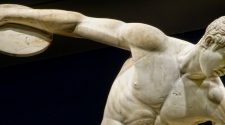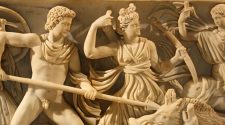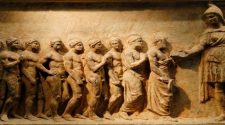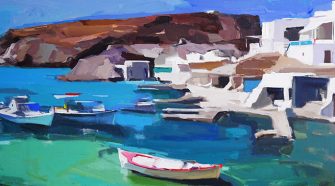Looking at Classical Greek painting you see a revelation of naturalist and linear perspectives that remained intact until Italian high renaissance. During the classical period painting of all sorts flourished including vase painting. The highest form of painting completed though was panel painting that was done in tempura or encaustic. Subjects painted included portraits, figurative scenes and various exhibitions like Delphi and Athens. Sadly though have none survived.
A common mural decoration during the time was Fresco painting done in tombs, houses, temples and public buildings but these paintings unfortunately had lower value than panel painting. Looking at a very famous Greek fresco painting it include the Paestum Tomb of the Diver, which is only one of numerous grave decorations in Italy that was done by Greek artists.
Another one worth noting is the Great Tomb at Verfina which is a white background, with a simple ground line and a singular tree but depicting a royal lion hunt and it is notable that it was the first evidence of Optical Fusion in Greek art used. Other specialist techniques used and mastered by Greek artist include wood sculpture, terracotta and stone painting in this time. Stone sculptures were often very bold and the only parts of the stone left natural in a sculpture were the face but more often would you find the entire sculpture boldly and vividly covered from head to toe. It was a distinctive art form and not merely sculptural enhancement and finding a sculpture with precious metals was also very popular.
There were prominent and famous painters during the classical period that included Timarete who painted goddess Diana, Parrhasius who painted Theseus, Agatharchos, Zeuxis and Apollodorus. At a very high point in Greek painting during late classical we saw Apelles who is known for his painting of Philip II of Macedonia as well as his son who was Alexander the Great and he was the one who changed Greek painting by adding techniques of colouring, shading and highlighting.










No Comment